Here is a suggestion for a "spider-plot" taken from my collection.
Since it uses data from a datablock instead from a file (because it's easier to address certain lines, e.g. via $Data[1]), therefore, it requires gnuplot >=5.2.0.
The actual data is in $Data and some settings for ranges and custom offset adjustments are in $Settings.
The number of axes is automatically adjusted if you add some more rows in $Data and $Settings. Data needs to be separated by whitespace, because the gnuplot function word(string,number) is used to extract some values.
I hope it is more or less self-explaining. Comments, report of bugs or improvements are welcome.
Code:
### spider plot/chart with gnuplot
# also known as: radar chart, web chart, star chart, cobweb chart,
# radar plot, web plot, star plot, cobweb plot, etc. ...
reset session
set size square
unset tics
set angles degree
set key top left
# Data
$Data <<EOD
SpiderData "Product A" "Product B" "Product C" "Product D"
Colors red green blue violet
"attribute 1" 2 10 7 3.5
"attribute 2" 1 0.5 3 4
"attribute 3" 37 58 49 72
"attribute 4" 1985 1992 2006 2010
"attribute 5" 0.1 0.5 0.3 0.8
EOD
HeaderLines = 2
# Settings for scale and offset adjustments
# axis min max tics axisLabelXoff axisLabelYoff ticLabelXoff ticLabelYoff
$Settings <<EOD
1 0 12 6 0.00 -0.02 -0.05 0.00
2 0 6 6 0.00 0.05 0.00 0.05
3 30 90 6 0.00 0.00 0.05 0.03
4 1980 2016 6 0.00 0.00 0.09 -0.02
5 0 1.2 6 0.00 0.05 0.00 -0.05
EOD
# General settings
DataColCount = words($Data[1])-1
AxesCount = |$Data|-HeaderLines
AngleOffset = 90
Max = 1
d=0.1*Max
Direction = -1 # counterclockwise=1, clockwise = -1
# Tic settings
TicCount = 6
TicValue(axis,i) = real(i)*(word($Settings[axis],3)-word($Settings[axis],2)) \
/ word($Settings[axis],4)+word($Settings[axis],2)
TicLabelPosX(axis,i) = PosX(axis,i/TicCount) + word($Settings[axis],7)
TicLabelPosY(axis,i) = PosY(axis,i/TicCount) + word($Settings[axis],8)
TicLen = 0.03
TicdX(axis,i) = 0.5*TicLen*cos(alpha(axis)-90)
TicdY(axis,i) = 0.5*TicLen*sin(alpha(axis)-90)
# Functions
alpha(axis) = (axis-1)*Direction*360.0/AxesCount+AngleOffset
PosX(axis,R) = R*cos(alpha(axis))
PosY(axis,R) = R*sin(alpha(axis))
Scale(axis,value) = real(value-word($Settings[axis],2))/(word($Settings[axis],3)-word($Settings[axis],2))
# Spider settings
set style arrow 1 dt 1 lw 1.0 lc -1 head # style for axes
set style arrow 2 dt 2 lw 0.5 lc -1 nohead # style for weblines
set style arrow 3 dt 1 lw 1 lc -1 nohead # style for axis tics
set samples AxesCount
set isosamples TicCount
set urange[1:AxesCount]
set vrange[1:TicCount]
do for [i=1:DataColCount] { # set linetypes/colors
set linetype i lc rgb word($Data[2],i+1)
}
set style fill transparent solid 0.2
set xrange[-Max-4*d:Max+4*d]
set yrange[-Max-4*d:Max+4*d]
plot \
'+' u (0):(0):(PosX($0,Max+d)):(PosY($0,Max+d)) w vec as 1 not, \
$Data u (PosX($0+1,Max+2*d)+word($Settings[$0+1],5)): \
(PosY($0+1,Max+2*d)+word($Settings[$0+1],6)):1 every ::HeaderLines w labels center enhanced not, \
'++' u (PosX($1,$2/TicCount)):(PosY($1,$2/TicCount)): \
(PosX($1+1,$2/TicCount)-PosX($1,$2/TicCount)): \
(PosY($1+1,$2/TicCount)-PosY($1,$2/TicCount)) w vec as 2 not, \
'++' u (PosX($1,$2/TicCount)-TicdX($1,$2/TicCount)): \
(PosY($1,$2/TicCount)-TicdY($1,$2/TicCount)): \
(2*TicdX($1,$2/TicCount)):(2*TicdY($1,$2/TicCount)) \
w vec as 3 not, \
for [i=1:DataColCount] $Data u (PosX($0+1,Scale($0+1,column(i+1)))): \
(PosY($0+1,Scale($0+1,column(i+1)))) every ::HeaderLines w filledcurves lt i title word($Data[1],i+1), \
'++' u (TicLabelPosX($1,$2)):(TicLabelPosY($1,$2)): \
(sprintf("%g",TicValue($1,$2))) w labels font ",8" not
### end of code
Result:

